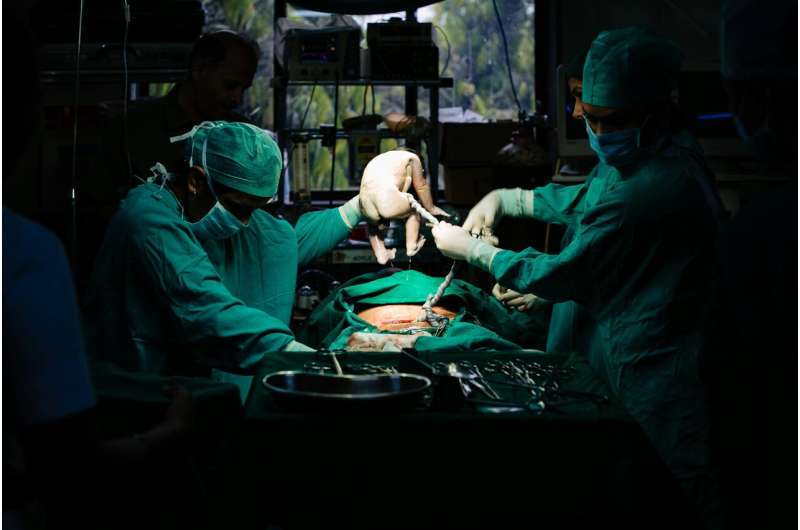“Coprococcus and Akkermansia muciniphila have potential protective effects. These bacteria were correlated with important substances in the stool, such as vitamin B and precursors to neurotransmitters which play vital roles orchestrating signaling in the brain. Overall, we saw deficits in these bacteria in children who later received a developmental neurological diagnosis,” says Angelica Ahrens, Assistant Scientist in Triplett’s research group at the University of Florida and the first author of this study.
The present study also confirms that the risk of developmental neurological diagnosis in the child increases if the parents smoke. Conversely, breastfeeding has a protective effect, according to the study.
In cord blood taken at the birth of children, the researchers analyzed the amounts of various substances from the body’s metabolism, such as fatty acids and amino acids. They also measured some harmful substances that come from outside, such as nicotine and environmental toxins. They compared substances in the umbilical cord blood of 27 children diagnosed with autism with the same number of children without a diagnosis.
It turned out that children who were later diagnosed had low levels of several important fats in the umbilical cord blood. One of these was linolenic acid, which is needed for the formation of omega 3 fatty acids that are anti-inflammatory and have several other effects in the brain.
The same group also had higher levels than the control group of a PFAS substance, a group of substances used as flame retardants and shown to negatively affect the immune system in several different ways. PFAS substances can enter the body via drinking water, food and the air we breathe.
It is not certain that the relationships that the research team found in the Swedish children can be generalized to other populations, but these issues need to be studied in other groups as well. Another question is whether gut flora imbalance is a triggering factor or whether it has occurred as a result of underlying factors, such as diet or antibiotics.
Lead author Dr. Miguel Constância, said: “One theory about imprinted genes is that paternally-expressed genes are greedy and selfish. They want to extract the most resources as possible from the mother. But maternally-expressed genes act as countermeasures to balance these demands.”
“In our study, the father’s gene drives the fetus’s demands for larger blood vessels and more nutrients, while the mother’s gene in the placenta tries to control how much nourishment she provides. There’s a tug-of-war taking place, a battle of the sexes at the level of the genome.”
The team say their findings will allow a better understanding of how the fetus, placenta and mother communicate with each other during pregnancy. This in turn could lead to ways of measuring levels of IGF2 in the fetus and finding ways to use medication to normalise these levels or promote normal development of placental vasculature.
The researchers used mice, as it is possible to manipulate their genes to mimic different developmental conditions. This enables them to study in detail the different mechanisms taking place. The physiology and biology of mice have many similarities with those of humans, allowing researchers to model human pregnancy, in order to understand it better.
The new research, led by the University of Sydney, is a two-year follow up of the Australian Placental Transfusion Study, the award-winning and largest-ever clinical trial of delayed cord clamping of babies born before 30 weeks. It was conducted in 25 hospitals across seven countries.
The new study compared outcomes for over 1500 babies from the initial study, 767 with caregivers aiming for 60 second delay in clamping and 764 with caregivers aiming for cord clamping before 10 seconds after delivery.
Researchers found that delaying clamping reduces a child’s relative risk of death or major disability in early childhood by 17 percent. This included a 30 percent reduction in mortality before the age of two.
Stem Cells Could Be New Option for Closure of Alveolar Cleft
At age five months, the stem cells were thawed for use as part of “boneless bone grafting” surgery (gingivoperiostioplasty). The stem cells were placed in a pocket of soft tissue bridging the gap in the upper jaw. A small piece of absorbable biomaterial (Gelfoam) was used a scaffold to guide growth of new bone across the cleft palate. This procedure was performed at the same time as surgery to correct the cleft lip (cheiloplasty).
Follow-up confirmed formation of new bone to close the cleft palate, providing good position and support for normal eruption of the teeth. Imaging scans when the patient was five years old showed good thickness of the upper jaw bone in the area where the cleft had been.
A major potential advantage of the stem cell procedure is avoiding the need for later bone grafting surgery—currently the standard technique for closing the cleft. This procedure uses bone taken from elsewhere in the child’s body, typically the hip. Bone grafting has potential complications and subjects the child to one or more additional surgeries.
